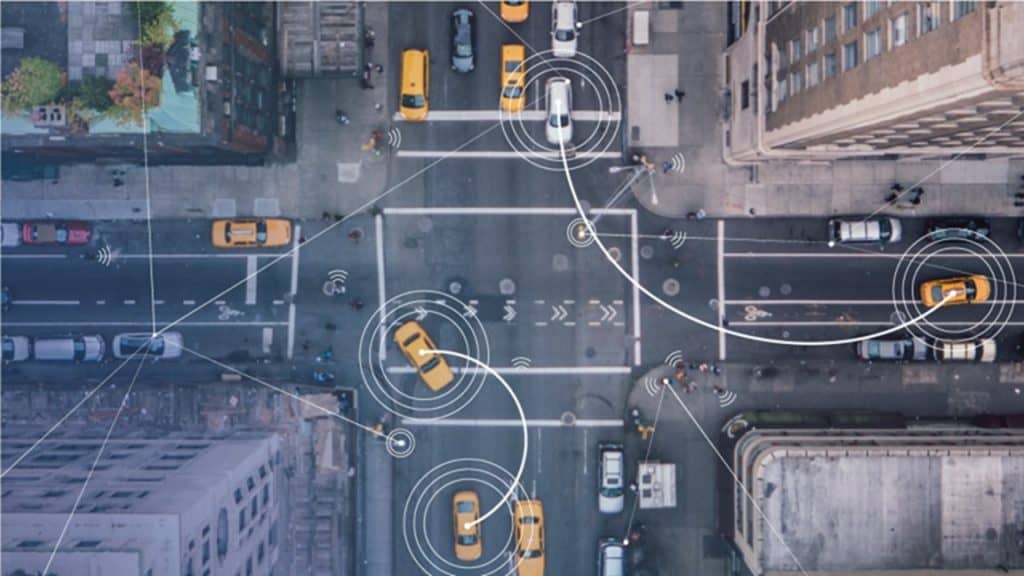 The U.S. Department of Transportation issued a proposed rule today to help deployment of connected vehicle technologies throughout the U.S. light vehicle fleet. Suppliers of V2V infrastructure and automakers are pleased with the proposal.
The U.S. Department of Transportation issued a proposed rule today to help deployment of connected vehicle technologies throughout the U.S. light vehicle fleet. Suppliers of V2V infrastructure and automakers are pleased with the proposal.
The Notice of Proposed Rulemaking would enable vehicle-to-vehicle (V2V) communication technology on all new light-duty vehicles, enabling a multitude of new crash-avoidance applications by helping vehicles “talk” to each other.
The proposed rule announced today would require automakers to include V2V technologies using DSRC in all new light-duty vehicles. The rule proposes requiring V2V devices to “speak the same language” through standardized messaging developed with industry.
Separately, the Department’s Federal Highway Administration plans to soon issue guidance for Vehicle-to-Infrastructure (V2I) communications, which will help transportation planners integrate the technologies to allow vehicles to “talk” to roadway infrastructure such as traffic lights, stop signs and work zones to improve mobility, reduce congestion and improve safety.
NHTSA estimates that safety applications enabled by V2V and V2I could eliminate or mitigate the severity of up to 80 percent of non-impaired crashes, including crashes at intersections or while changing lanes.
V2V devices would use the dedicated short range communications (DSRC) to transmit data, such as location, direction and speed, to nearby vehicles. That data would be updated and broadcast up to 10 times per second to nearby vehicles, and using that information, V2V-equipped vehicles can identify risks and provide warnings to drivers to avoid imminent crashes. Vehicles that contain automated driving functions—such as automatic emergency braking and adaptive cruise control—could also benefit from the use of V2V data to better avoid or reduce the consequences of crashes.
V2V communications can provide the vehicle and driver with enhanced abilities to address additional crash situations, including those, for example, in which a driver needs to decide if it is safe to pass on a two-lane road (potential head-on collision), make a left turn across the path of oncoming traffic, or determine if a vehicle approaching an intersection appears to be on a collision course. In those situations, V2V communications can detect developing threat situations hundreds of yards away, and often in situations in which the driver and on-board sensors alone cannot detect the threat.
Privacy is also protected in V2V safety transmissions. V2V technology does not involve the exchange of information linked to or, as a practical matter, linkable to an individual, and the rule would require extensive privacy and security controls in any V2V devices.
A coalition of automakers, highway safety advocates and intelligent transportation organizations welcome the release of the Department of Transportation’s notice of proposed rulemaking (NPRM) to establish an interoperable platform for Vehicle-to-Vehicle (V2V) communications in new vehicles to provide safety and mobility benefits.
John Bozzella, President and CEO of the Association of Global Automakers said, “Today’s release of the V2V NPRM is a critical step to enabling connected car technologies that promise to improve highway safety and deliver significant lifesaving benefits.”
The auto industry and the government have spent hundreds of millions of dollars in research, development and testing of connected vehicle technology. This technology, which can enhance the safety and performance of automated and non-automated vehicles, has been tested in deployments throughout the country including in Arizona, California, Michigan, New York, and Virginia. The NPRM and forthcoming final rule will help provide the transportation industry, including automakers, aftermarket suppliers, and road operators, with the standardization and certainty they need to quickly deploy this revolutionary technology.
Regina Hopper, President and CEO of the Intelligent Transportation Society of America said, “This is an important step forward toward ensuring the full potential of V2V to dramatically reduce roadway fatalities and transform mobility in our nation. This DOT standard will ensure that we quickly achieve a critical mass of vehicles on the road that can communicate with each other and with the infrastructure.”
NXP Semiconductors applauded the Notice of Proposed Rulemaking issued by the United States’ Department of Transport (DoT) and the National Highway Traffic Safety Administration (NHTSA). The proposed rule would mandate that automakers include V2V technologies in all new light-duty vehicles.
“We are proud of the leading role NXP and its partners have played over the past several years in developing and testing secure, privacy-respecting and reliable vehicle-to-x communications (V2X) technology. After more than one million days of V2X testing, we are contributing to the ‘state of the art’ and are convinced that the technology is mature and safe and ready for deployment worldwide,” says Kurt Sievers, general manager of the automotive business at NXP. “As a leading technology provider to the automotive market, we view an accelerated rollout of this life-saving technology as one of the most important milestones in the history of our industry, one that will transform our roads and vehicles as never before.”
Savari CEO Ravi Puvvala, in a statement noted “The DOT’s new rule for V2V technology in cars brings us one step closer to a mandate for the technology in all new vehicles. We’re excited by the government’s progress in continuing to support this important technology. V2X is clearly one of the big technology news stories of 2016 and this momentum will carry on into the New Year. This is one of those watershed moments that we will look back on fondly 10 or 20 years from now, examining how safe our roadways have become and how many lives were saved.”